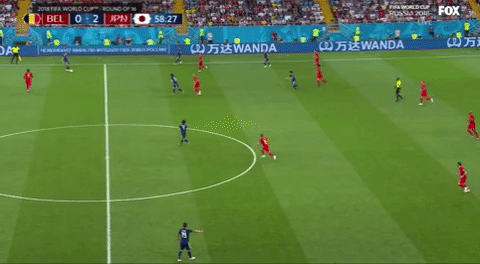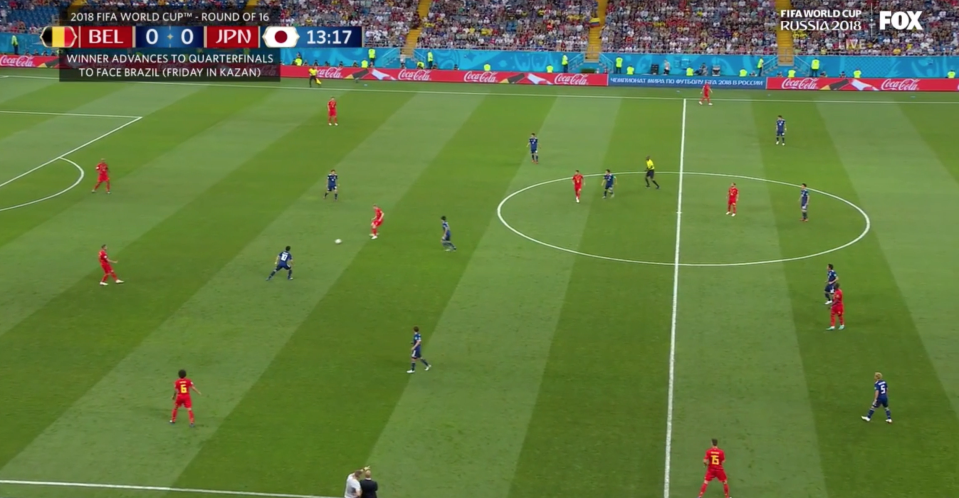Why Belgium must bench a star to shock Brazil in the World Cup quarters
Roberto Martinez spends half of his managerial existence in a fantasyland. More often than not, it’s a lovely place. And as his galactic Belgium team spanked Panama and Tunisia to open the 2018 World Cup, it was especially magnificent. It glistened with goals.
But if Martinez is to kill off the giant of all giants in a glamorous quarterfinal on Friday, he has to leave it behind. If he’s to engineer an upset of Brazil, he must snap out of his attacking nirvana and back to reality.
Martinez, ever since preparations for the World Cup got underway in earnest, has been stuffing four prolific attackers into one starting 11. They’re his four best players, and four primary reasons Belgium seems closer than ever before to a World Cup title.
But this isn’t Martinez’s idyllic fantasyland anymore. This isn’t FIFA the video game, even if Belgium’s lineup often looks like one straight out of Ultimate Team. Friday in Kazan (2 p.m. ET, Fox Sports 1), Belgium meets a juggernaut.
Friday in Kazan, one of the four stars has to go.
Belgium’s absurdly offensive-minded approach

The stars are Romelu Lukaku, Dries Mertens, Eden Hazard and Kevin De Bruyne. And it’s not possible to fit all four into a team without shunting at least one or two into suboptimal positions.
Lukaku and Mertens are strikers. Hazard is a winger or inside forward. De Bruyne is an attacking midfielder. Only two of the four are playing their preferred roles. Martinez has installed a bonkers 3-4-2-1 formation that effectively casts Mertens as a supporting inside forward and De Bruyne as a defensive midfielder, with wingers bombing down the flanks to either side of them.

The six attackers have sliced through almost everybody in their path. They have Belgium at the top of the 2018 World Cup goalscoring charts. This time last week, they had Belgium looking like one of four or five top-tier title contenders.
But the Red Devils spent the vast majority of their prep for the quarterfinals pounding inferior foes. They beat Saudi Arabia, Egypt and Costa Rica by a combined 10 goals in warmup friendlies. They advanced to the Round of 16 with lopsided wins over two of the five worst teams in Russia.
Friday will be different – just like Monday was different. And that’s why Belgium has to be different to knock off Brazil.
How Belgium was exposed by Japan
Martinez must heed the lessons of a petrifying Round of 16 scare. On Monday, the first opponent capable of exploiting his fantastical attacking approach did just that.
Japan pushed the favored Belgians to the brink by exposing their structure as untenable. The Samurai Blue unmasked a midfield that either lacks stability or shackles one of the world’s best playmakers. On Monday, it did both.
Never were the problems more apparent than on Japan’s two goals. De Bruyne’s lack of positional awareness as a defensive midfielder enabled the first. He got sucked to the ball. His failure to recognize Japan’s counterattacking threat – and Martinez’s failure to put a third midfielder beside him – opened up lanes to goal.

On the second, De Bruyne’s attacking instincts – and lackadaisical back-tracking – left Axel Witsel 1-v-2 at the top of the box. They allowed Shinji Kagawa to win the second ball after Vincent Kompany’s clearance, and to create shooting space for Takashi Inui.

Oh, and it wasn’t just the goals. De Bruyne’s tendency to press up on a deep-lying midfielder rather than sit back and clog passing lanes allowed Japan to break Belgium’s lines:

Belgium’s numerical disadvantage in midfield was easy to exploit:

De Bruyne is a top-10 player in the world. He’s also Belgium’s problem. That says a lot about how Martinez is utilizing him.
De Bruyne’s role
The idea to use De Bruyne as a traditional central midfielder likely stems from his similar transition at club level. Pep Guardiola has molded him into a No. 8 (box-to-box midfielder) at Manchester City. Nominally, that’s the position he’s playing with the national team as well.
But De Bruyne’s role at City is distinct. He has called it the “free 8.” He’s one of two attack-minded two-way midfielders who fall somewhere between 8 and 10 on the 6-8-10 midfield continuum. He’ll usually have one striker and two wingers ahead of him, and a single pivot and back four – with fullbacks sometimes inverting to become fourth midfielders – behind him.
In Belgium’s alignment, though, he’s often closer to 6 than 10. He and Witsel form a double pivot. Whereas at City he’s most effective receiving the ball on the half-turn in between an opponent’s midfield and defensive lines, here he is often gathering it in front of the opposition midfield, the first link from defense to attack.

There are some wrinkles that allow De Bruyne to get forward, and some situations that compel him to. But when he does, he leaves Witsel on an island. When he doesn’t, the Premier League’s assist leader gets stuck 70 yards away from goal.
Against Panama and Tunisia, he was in his element. Belgium’s territorial advantage allowed him to play at the top of the attacking third. Against lesser teams, he can still be the two-way force he is at City.
But against Japan – lesser, but not completely outclassed – outsize responsibility got the best of De Bruyne. And if he can’t have the best of both worlds against Japan, he certainly won’t be able to cope against Brazil.
So what is Belgium’s solution?
The solution, though, isn’t to bench De Bruyne. It’s to move him further up the pitch. And that means another one of the fearsome attacking foursome has to make way.
It’s a dilemma international managers, many of whom have unbalanced squads, face all the time. Some choose personnel over system, letting the players at their disposal dictate the way they play. Others prioritize the system and axe those who don’t fit into it. Martinez, over the past few months, has taken the first approach. Friday’s task is begging him to prove his adaptability and adopt the latter.
Mertens, who was ineffective against Japan, can and should be sacrificed. De Bruyne can slide into Mertens’ spot, with a mandate to drop into midfield, but also with a second conventional central midfielder – Mousa Dembele? Marouane Fellaini? Youri Tielemans? – behind him.
That player will aid Witsel against a Brazilian attacking midfield line that loves to overload the middle three-fifths of the field. And with the added solidity, Belgium will have a chance to unseat the World Cup favorite.
– – – – – – –
Henry Bushnell covers global soccer for Yahoo Sports. Have a tip? Question? Comment? Email him at henrydbushnell@gmail.com, or follow him on Twitter @HenryBushnell, and on Facebook.


